
Texas

 |
Texas
|
 |
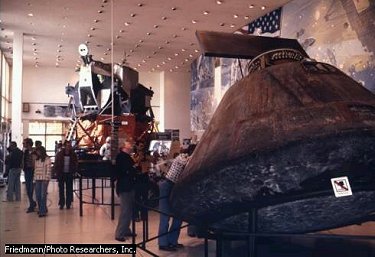 |
Few states possess as wide a variety of resources as Texas, and few support economic activities of comparable variety. The economy of Texas has closely reflected key technological developments that have occurred during the state's history. The widespread use of barbed wire in the 1880s enabled improvements in cattle breeding and ranching. By the 1920s the ravages of the boll weevil elsewhere in the southern United States, combined with advances in irrigation techniques, led to greatly increased cotton production in the state, sustaining a major industry that has endured to the present. Commercial production of oil began in 1894. However, the first large-scale production resulted from the discovery of petroleum at Spindletop, near Beaumont, in the |
| The ranches of Texas raise Hereford, Shorthorn, Angus, and Brahman cattle. The Santa Gertrudis, the only recognized breed to be started in the United States, was developed on the King Ranch in south Texas. Cattle production has shifted from the drier areas of western Texas to the more humid eastern sections. Cattle ranching is heavily concentrated along the Gulf Coast and in the southern Río Grande plain south of the Edwards Plateau. The drier areas in western Texas, notably the Edwards Plateau, have remained important for the production of sheep and goats. | 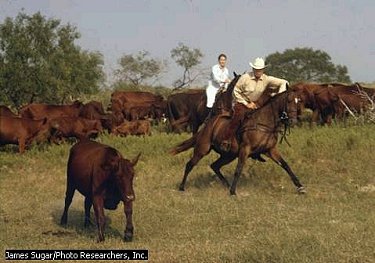
|
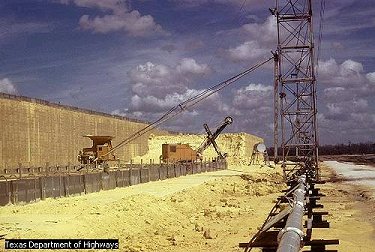 |
Texas has for many years led all other states in the value
of mineral production. Petroleum, natural gas, and natural gas liquids
accounted for 93 percent of the mineral value in 1997. However, the
reserves of oil and gas that were recoverable under existing economic and
technological conditions were increasingly being depleted in the late
1990s. The most valuable non-fuel minerals extracted in 1997 were portland cement, crushed stone, sand and gravel used |
| Because a vast amount of equipment and relatively few workers are required in petroleum operations, only 2 percent of Texas wage earners are employed in mining activities. Mineral resources are widely distributed throughout the state, with some form of mineral wealth found in almost all of the 254 counties of Texas. Petroleum, the leading mineral, is produced in approximately 200 counties. However, there are three major petroleum-producing areas in the state: the East Texas Oil Field, centering on the city of Kilgore; the Texas Gulf Coast region; and the Permian Basin in western Texas. Of the seven leading petroleum-producing counties, all but one are in the |
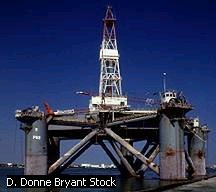
|
 |
The National Aeronautics and Space Administration
(NASA) operates the Lyndon B. Johnson Space Center in Houston. The
center has attracted many aerospace industries that require highly trained
specialists, and research plays an important part in its
operations. |
Houston, with a population of 1,744,058 in 1996, is the dominant city on the coast. It is a shipping point for goods produced throughout the Southwest and has the central administrative offices of many oil, gas, and pipeline companies. Beaumont, with 111,224 people, and Port Arthur, with 57,701, are twin seaport cities in southeastern Texas. Galveston, with 60,048 people, and Texas City, with 42,368, are seaports on Galveston Bay south of Houston. Galveston is located on an island, and its long beaches on the Gulf side of the island make it a popular summer |

|
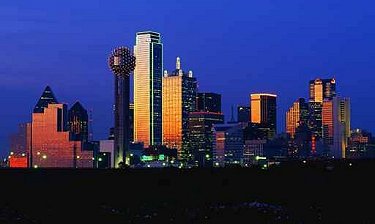 |
The Black Prairies, stretching down the northwestern edge of the Coastal Plain, originally constituted Texas's richest cotton-farming country. The farm population has declined there, but the cities have grown. Dallas, with 1,053,292 people in 1996, for example, is at the center of one of the fastest growing regions of the country. |
San Antonio, with 1,067,816 people in 1996, was first settled by Spaniards. It became the capital of their Texas territory during the late 18th and l9th centuries. Later its growth was spurred by the development of the surrounding rich Black Prairies farming area. Austin has a population of 541,278 and is the capital city of Texas. Waco, with 108,412 people, is a transportation and distribution center. |
San
Antonio, Texas 
|
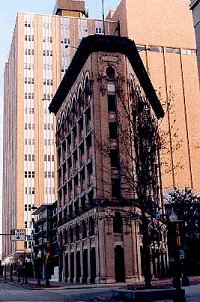
|
Fort Worth, with 479,716 people in 1996, is the major metropolitan center of the Central Lowland. Although Fort Worth and Dallas are only 50 km (30 mi) apart, Dallas tends to face east in its business interests and Fort Worth is more concerned with the farmlands, ranchlands, and oil fields to the west. Wichita Falls, with 100,138 people, is the second largest city of the Central Lowland. Its rapid growth has been spurred by the discovery of large petroleum deposits nearby. |
The Basin and Range province is largely unpopulated. Great expanses of land are too mountainous and dry to support human habitation. Some scenic parts of this country are held in state and national parks, yet there are also important ranchlands there. El Paso, with 599,865 people in 1996, is the major city in the Basin and Range province. |
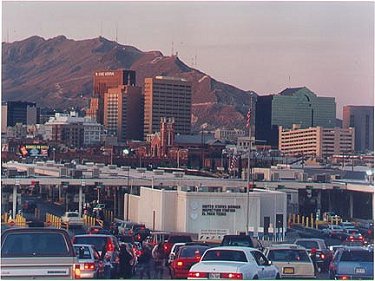 |
|
Join The Cities Of . Com |
Today's Good News |